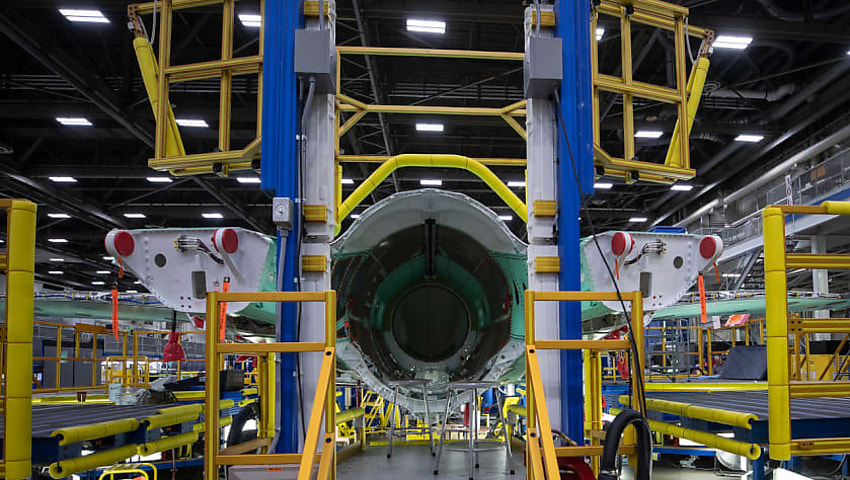Rare earth elements (REE) have emerged as the new wonder material of the 21st century, responsible for every contemporary technological marvel and critical to the US, Australia and other allies maintaining their technological advantage over potential adversaries. However, China currently provides approximately 95 per cent of the world’s supply, but it doesn’t have to be that way.
REEs are defined as a collection of 17 elements and are broken up into two unique groups: light rare earth elements (LREE) and heavy rare earth elements (HREE) each with unique and highly specialised uses in contemporary technologies – with key defence and aerospace technologies heavily dependent on extensive use of REE.
A 2013 US congressional report into the importance of REE in the US national defence equation identified that the while US Department of Defense uses less than 5 per cent of domestic REE consumption, they play a critical role in maintaining the qualitative edge of the US Military. In particular, REEs play an important role in a number of defence weapons systems, including:
- Fin actuators in missile guidance and control systems, controlling the direction of the missile;
- Disk drive motors installed in aircraft, tanks, missile systems, and command and control centres;
- Lasers for enemy mine detection, interrogators, underwater mines, and countermeasures;
- Satellite communications, radar, and sonar on submarines and surface ships; and
- Optical equipment and speakers.
The ongoing trade war between the US and China in particular has shed new light on the growing importance of REE, particularly in the national security context – with China responsible for producing 97 per cent of rare earth ore, 97 per cent rare earth oxides, 89 per cent of rare earth alloys, 75 per cent of neodymium iron boron magnets and 60 per cent of samarium cobalt magnets, all critical for contemporary weapons systems, sensors and more broadly civilian technologies.
For reference, a US Navy Virginia Class fast attack submarine requires approximately 4.2 tonnes of various REEs, while the Lockheed Martin F-35 Joint Strike Fighter requires approximately 417 kilograms of various REEs to support information transfer, energy storage, computational devices and in some cases stealth coatings.
Additionally, REEs form core components, including highly-powered magnets essential for the guidance systems of smart bombs, cruise missiles and the Aegis integrated air and missile defence combat system through to providing hardening elements for ceramic components for contemporary body armour and armour systems on ground vehicles.
Recognising the importance of these factors, combined with China's complete dominance of the global supply chain of REE and the follow on products – the US Government Accountability Office concluded in 2016 that "DOD has no comprehensive, department-wide approach to determine which rare earths are critical to national security, and how to deal with potential supply disruptions to ensure continued, reliable access".
This dependence on a potentially hostile peer competitor places the enduring technological dominance of the US Military and, to a lesser extent, the supporting dominance of key-US allies like Australia in a precarious position – or does it?
Never fear, Australia is here!
Despite there name, REEs are relatively plentiful in the planet's crust – however, the complexity of the refining process, namely the prevalence of low levels of radioactivity and the potential for radiation contamination as a result of the refining process, has prompted many Western nations including the US and Australia to outsource refining, until now.
Australia enjoys a large domestic supply of various REEs, including both LREE and HREE, with a cluster of small refining companies locally based yet not able to develop refining facilities until know. Australia-based Lynas Corporation has recently responded to the growing concerns raised by the US Department of Defense to announce plans for a Texas-based refining facility, which is expected to be responsible for producing at least 1,200 tonnes of HREE oxides annually.
However, Lynas' planned US expansion serves as only a drop in the bucket for US consumption, with the US importing US$160 million worth of REE metals and compounds in 2018 – an increase of 17 per cent on 2017. Providing an avenue for a completely integrated National Strategic Resource Reserve and supporting National Strategic Industries Act to support both Australian and allied REE consumption requirements would lead to increasing economic and industrial benefits for Australia's economy and defence industrial base.
While Australia enjoys a virtually unrivalled wealth of natural resources, the ability to refine and produce vast quantities of steel, coking coal and now domestic agricultural produce and critical, specialised medical supplies also serves as a glaring gap in the broader national security debate. Accordingly, any national strategic reserve policy requires a holistic approach with a specific focus on strategic resources.
Contemporary Australia has been far removed from the harsh realities of conflict, with many generations never enduring the reality of rationing for food, energy, medical supplies or luxury goods, and even fewer within modern Australia understand the socio-political and economic impact such rationing would have on the now world-leading Australian standard of living.
Developing and implementing a cohesive, innovative and long-term vision for Australia's sovereign defence industry capability can also serve as the basis for developing and in some cases redeveloping a robust, advanced manufacturing economy taking advantage of Australia's unrivalled resource wealth – supporting the broader national security and interests in the Indo-Pacific.
Let us know your thoughts in the comments section below, or get in touch with









